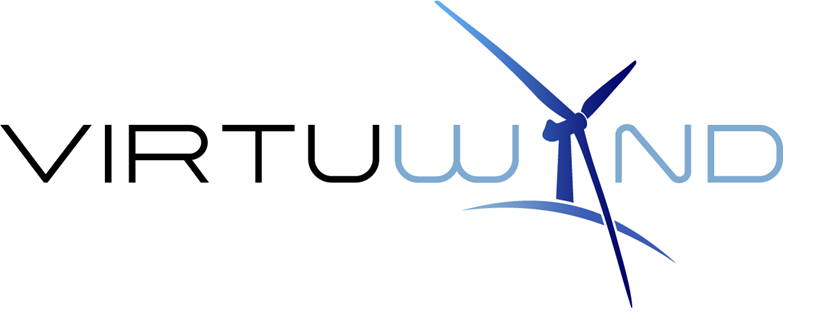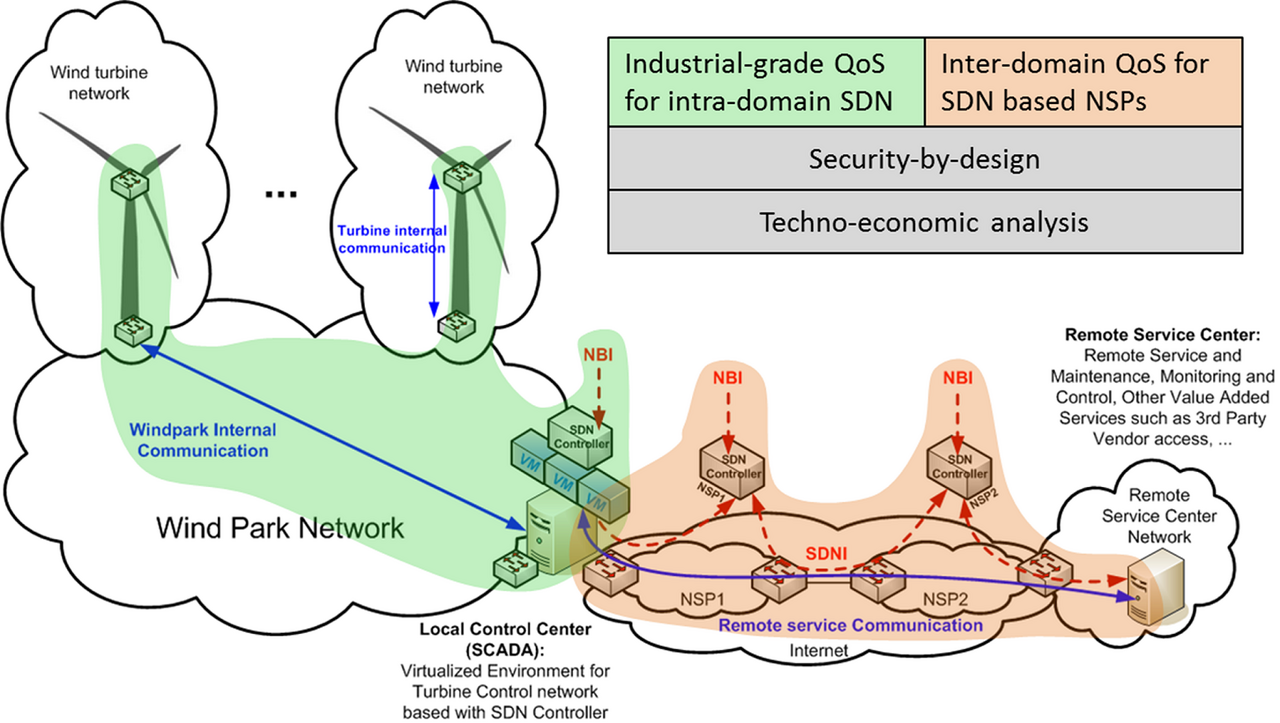VirtuWind
Virtual and programmable industrial network prototype deployed in operational Wind park

| Project Home: | www.virtuwind.eu |
| Funding Agency: | European Commission |
| Duration: | 3 years, 01.07.2015-30.06.2018 |
| Partners: | Siemens AG, TUM, KCL, Deutsche Telekom, NEC, Intel, ICOM, FORTH, World Sensing |
| Contact: | E. Sakic (ermin.sakic@tum.de) |
| A. Van Bemten (amaury.van-bemten@tum.de) | |
| P. Stojsavljevic (petra.stojsavljevic@tum.de) | |
| C. Mas Machuca (cmas@tum.de) | |
| W. Kellerer (wolfgang.kellerer@tum.de) |
Scope of Project
The VirtuWind project is one of the 5G-PPP phase-1 projects under the Horizon 2020 framework. Video.
VirtuWind developed and demonstrated an SDN & NFV ecosystem, based on open, modular and secure framework showcasing a prototype for intra-domain and interdomain scenarios in real wind parks as a representative use case of industrial networks, and validated the economic viability of the demonstrated solution. The wind park control network has been chosen as a professional application in VirtuWind as wind energy has now established itself as a mainstream of sustainable energy generation. By envisioning lower capital expenditure and operational expenditure costs in control network infrastructure, VirtuWind played an important role in assisting the wind energy sector to achieve cost reductions. Further applicability of the VirtuWind solution in other industrial domains brings multifold benefits in their communication networks.

Achieved Results
- The logic and methods for realizing industrial-grade QoS for intra-domain were designed, implemented and evaluated. This includes network models for delay computations [1] [2] [3] and routing strategies for optimizing path selection (i.e., network utilization) and the time needed for service provisioning [4] [5] [6] [7]. Results regarding routing algorithms were collected in our LORA interactive web page.
- Analyzed the incentives for softwarization of industrial networks, such as reduced time and cost for service provisioning and network maintenance, providing a techno-economic study on real life wind parks [8].
- Provided efficient algorithms for design of reliable control plane [9] and service function chains [10][11] in softwarized networks
- Developed frameworks to assess dependability of network orchestration platforms, i.e., software maturity [12][13], localization of defective services [14] and service failure dynamics [15]
- The developed logic and software were successfully deployed and tested as part of a field trial in a real wind park.